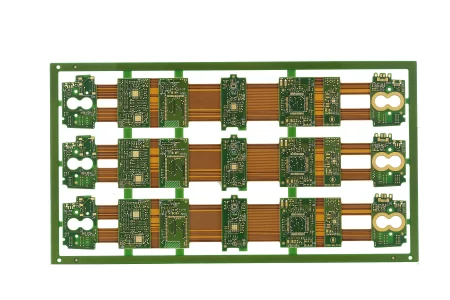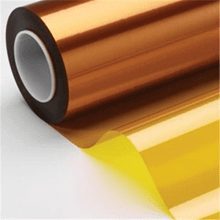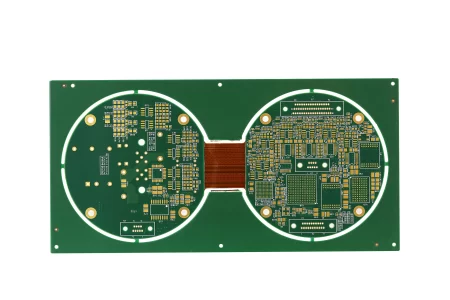- +86-755-23012705
- Building 3, Jinfeng Industrial Park, Fuyong Street, Baoan District, Shenzhen ,China
- [email protected]
In recent years, the growing focus on environmental sustainability has led to stricter regulations in the electronics industry, especially concerning the materials used in manufacturing products like printed circuit boards (PCBs). Among the various types of PCBs, rigid-flex PCBs have gained significant attention due to their ability to combine the benefits of both rigid and flexible circuits. However, the challenge for manufacturers is to select materials that not only meet the technical requirements of rigid-flex PCBs but also comply with increasingly stringent environmental regulations.
This blog explores the key environmental regulations affecting the material selection process for rigid-flex PCBs and discusses the materials that can be used to ensure both performance and environmental compliance.
A number of environmental standards and regulations have been established globally to reduce the environmental impact of electronic waste, particularly hazardous substances. Key regulations include:
RoHS (Restriction of Hazardous Substances): RoHS restricts the use of certain hazardous materials in electronic products, including lead (Pb), mercury (Hg), cadmium (Cd), hexavalent chromium (Cr6+), polybrominated biphenyls (PBB), and polybrominated diphenyl ethers (PBDE).
WEEE (Waste Electrical and Electronic Equipment Directive): WEEE sets collection, recycling, and recovery targets for electrical goods, aiming to reduce the environmental impact of electronic waste.
REACH (Registration, Evaluation, Authorization, and Restriction of Chemicals): REACH focuses on the regulation of chemicals, ensuring that materials used in manufacturing, including those in PCBs, are safe for both human health and the environment.
These regulations impact the choice of materials used in the manufacturing of rigid-flex PCBs. Manufacturers must not only consider material properties such as mechanical strength, flexibility, and electrical performance but also ensure compliance with these regulations.

Rigid-flex PCBs combine both rigid and flexible components, typically using a mix of materials for each section. The materials used in rigid-flex PCBs are critical to the board’s overall performance and compliance with environmental standards. Below, we look at the common materials used and their environmental considerations:
Rigid Sections: Typically, rigid sections of rigid-flex PCBs use FR4 (Flame Retardant 4) as a base material. However, traditional FR4 may contain substances such as brominated flame retardants (BFRs), which are restricted under RoHS and other environmental regulations.
Alternative Materials: To comply with RoHS, manufacturers may turn to halogen-free FR4 or materials like high-temperature laminates or ceramic-filled substrates, which do not use harmful halogens. These materials still offer the necessary structural integrity and electrical performance but without the environmental impact associated with traditional FR4.
Flexible Sections: Flexible circuits generally use polyimide (PI), a high-performance plastic known for its excellent thermal and electrical properties. Polyimide is inherently RoHS-compliant, but manufacturers must ensure that any additives used in the production process (e.g., flame retardants or plasticizers) are also compliant.
Alternative Materials: While polyimide remains a popular choice, manufacturers may also use PET (Polyethylene Terephthalate) or PFA (Perfluoroalkoxy) for specific applications that require lower costs or enhanced performance. These materials are also RoHS-compliant and offer a more environmentally friendly alternative to traditional polyimide.
Copper is the most commonly used material for the conductive traces in PCBs. However, it’s important to consider how copper is sourced and processed, as the mining and refining processes can have significant environmental impacts.
Alternative Materials: In response to environmental concerns, some manufacturers are now turning to recycled copper for PCB production. This significantly reduces the environmental footprint of copper extraction and processing, making it a more sustainable choice.

Soldering materials, particularly the solder paste, can also be a source of environmental concern. Traditional solders contain lead (Pb), which is a hazardous material under RoHS and poses risks to human health and the environment.
Lead-Free Solder: To comply with RoHS, most manufacturers now use lead-free solder, which typically consists of alloys like tin-silver-copper (SAC). These lead-free alternatives provide similar electrical and mechanical performance but without the environmental risks associated with lead. Furthermore, advancements in solder mask materials have led to the development of halogen-free solder masks, which contribute to a more environmentally responsible product.
In rigid-flex PCB manufacturing, especially when dealing with the flexible sections, adhesives are used to bond layers together. Traditional adhesives may contain hazardous substances, so the selection of adhesives must align with environmental standards.
Alternative Materials: Lead-free, non-toxic adhesives are now available, and these are formulated without harmful substances such as formaldehyde or solvents. Additionally, environmentally friendly underfill materials that are both thermally and chemically stable are now commonly used.
While selecting materials that comply with environmental regulations is essential, it presents several challenges for rigid-flex PCB manufacturers:
Balancing Performance and Sustainability: Some environmentally friendly materials may not offer the same mechanical or thermal properties as their traditional counterparts. Manufacturers need to strike a balance between regulatory compliance and the performance requirements of the end product.
Cost Considerations: Some eco-friendly materials, such as halogen-free FR4 or lead-free solders, can be more expensive than their traditional counterparts. This can increase the overall manufacturing cost, which may be a barrier for some companies, particularly those in cost-sensitive markets.
Supply Chain Constraints: Sourcing environmentally compliant materials can sometimes be difficult, as the market for eco-friendly alternatives is still developing in some regions. Manufacturers may face supply chain delays or higher costs due to limited availability.

As environmental concerns continue to shape the electronics industry, rigid-flex PCB manufacturers must adapt by selecting materials that meet both the performance requirements and environmental standards set by regulations like RoHS, WEEE, and REACH. The shift to halogen-free FR4, lead-free solders, and eco-friendly adhesives represents a significant step towards creating more sustainable electronic products.
Despite the challenges involved, the transition to environmentally compliant materials is not only necessary for regulatory compliance but also an opportunity for manufacturers to lead the way in producing more sustainable and responsible products. By selecting the right materials and staying ahead of evolving regulations, manufacturers can ensure the long-term viability of their rigid-flex PCBs in a greener future.
Take Your Projects to New Heights with XPCB Limited
XPCB Limited offers top-notch PCB manufacturing, quick-turnaround prototyping, and turnkey PCBA services designed to make your projects shine. Count on us to bring your ideas to life with efficiency and quality. Your success matters to us, and we’re here to make your innovation journey smooth and rewarding.






XPCB Limited is a premium PCB & PCBA manufacturer based in China.
We specialize in multilayer flexible circuits, rigid-flex PCB, HDI PCB, and Rogers PCB.
Quick-turn PCB prototyping is our specialty. Demanding project is our advantage.
Tel : +86-136-3163-3671
Fax : +86-755-2301 2705
Email : [email protected]
© 2024 - XPCB Limited All Right Reserve
